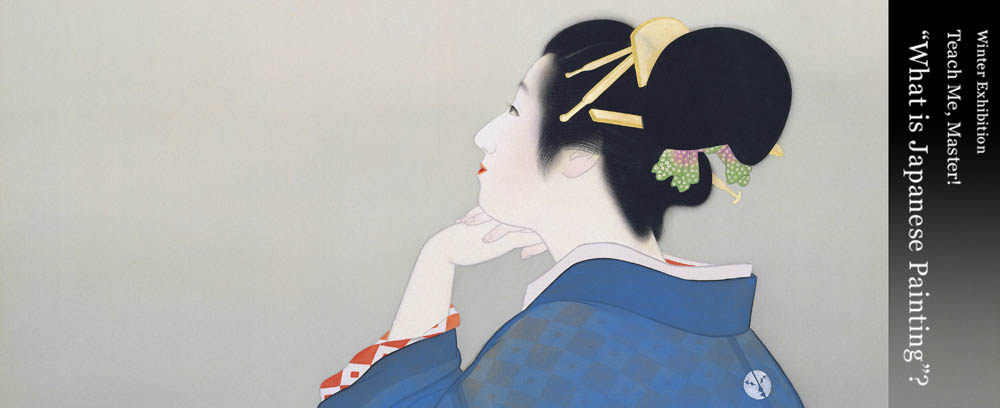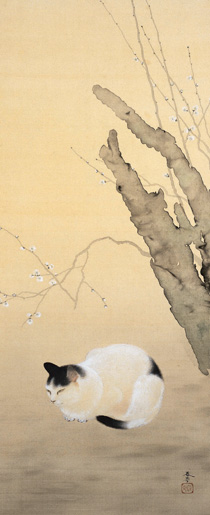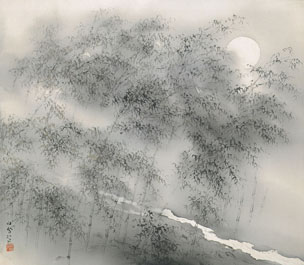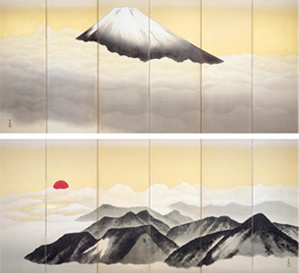
Woman Waiting for the Moon to Rise | Uemura Shoen
Winter Exhibition CLOSED
Teach Me, Master!
What is Japanese Painting ?
December 1 (Thu), 2016 ‐ February 28 (Tue), 2017
What is “Japanese painting”? Some people may think that Japanese painting is difficult, serious and conventional. The term “Japanese painting,” however, is relatively recent. It spread throughout Japan, in contrast to the term “Western painting” during the Meiji Period. So, what is the difference between Japanese and Western painting styles? First of all, the materials are different. For Japanese painting, pictures are depicted mainly on washi, traditional Japanese paper, and silk, and coloring materials are sumi ink and natural mineral pigments. Tarashi-komi, an ink diffusion technique, and the morotai method are also unique to Japanese painting. Expressions taking advantage of beautiful lines and blank space imply the delicate Japanese aesthetic sense. This exhibition will provide the viewer with basic knowledge about Japanese painting, displaying modern Japanese painting masterpieces. The “teaching materials” will be works by Yokoyama Taikan, Takeuchi Seiho, Uemura Shoen and Kaburaki Kiyokata, who were great masters of the modern Japanese art world. Be sure to visit the exhibition, a special “class”, to learn about and enjoy Japanese painting through various masterpieces.

Hishida Shunso "Cat and Plum Blossoms"
(1906)
(1906)
Additional Exhibition
Expression of Light in Japanese Painting
The resplendent morning sun, the sunset warmly glowing and the astral moonlight – Painters have expressed various types of light in their works. This exhibition will feature lights expressed by Yokoyama Taikan, Hishida Shunso, Hashimoto Kansetsu and more. We hope you will enjoy the diverse expression of light in Japanese paintings.

Hashimoto Kansetsu
"Bamboo Grove and Dim Moon"
(1935)
"Bamboo Grove and Dim Moon"
(1935)
Winter Special Exhibition
Selected Yokoyama Taikan Collection
This special exhibition for Taikan will display his outstanding works, including Mt. Fuji, a six-panel folding screen that depicts a divine, magnificent landscape, Summer : Four Seasons of Sacred Mt. Fuji, Autumn : Four Seasons of the Sea, Winter : Four Seasons of the Sea from the series Twenty Scenes of the Sea and Mt. Fuji. We hope you will lose yourself in Taikan’s world.

Yokoyama Taikan "Mt. Fuji"
(1932)
(1932)

